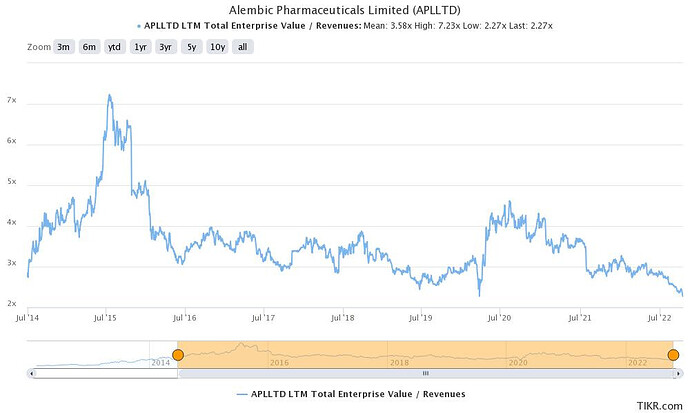I have found the concept of opportunity cost to be more useful in cos which are trading at very high valuations rather than all time low valuations. When prices have taken a lot of beating, one needs very few upside triggers as there is pessimism already priced in. Let me give some examples from my own investing journey.
ITC: We could have talked about opportunity cost at every point of time until early 2022. All of a sudden, prices moved up when broader markets are flat and made up for a lot of underperformance. Over my holding period, my IRRs have been around 25% in ITC which is because it looked like a value trap for the longest time, and I kept on buying it as underlying business was always solid.
Nalco: When I first created its thread (see below), share prices were at 15 year lows, aluminum prices were at decadal lows and there was gross skepticism around PSUs. It looked like a value trap, but that was only true in hindsight. It was a 4x in 1.5 years, although I could only ride 3x on it.
More recently, I have had a similar experience in Cochin Shipyard. I created my position at a time when it looked like a value trap. Who would have known at that time that in little more than a year, defense would be the flavor of season and Cochin Shipyard has made up for its underperformance at a time when broader markets have been flat.
I have also had very interesting experiences in highly valued cos and how they become a value trap. The whole HDFC family has lost its market fancy and my own IRRs in HDFC triplet (AMC, bank, parent) has taken a serious beating. During my holding period, there was never a time when anyone has doubted their growth, quality or longevity. Luckily for me, I have been able to sell at higher multiples and then buy back at lower multiples.
So its very hard to have the foresight of what markets will think of a company in the future, and trailing 1,3, 5 or even 15 year returns have no impact on future returns.
Now coming back to Alembic Pharma, its a classic cyclical where one can make money by buying through an industry downcycle. Look at EV/sales chart below to see how cheap Alembic is right now.
For cyclicals, the only thing which I have found working for me is to buy pessimism. And during upcycles, one makes their IRRs in very short periods of time. The only caveat is one has to sell in an upcycle (look at how I got stuck in Manappuram because I didn’t sell during the upcycle).
If you get time, read this thread and see examples of cyclicals like Wonderla, Nalco, Indigo, Inox Leisure, Maithan alloys, Ashiana Housing, etc. and how one should be buying through pessimism.
Hope this is useful.


